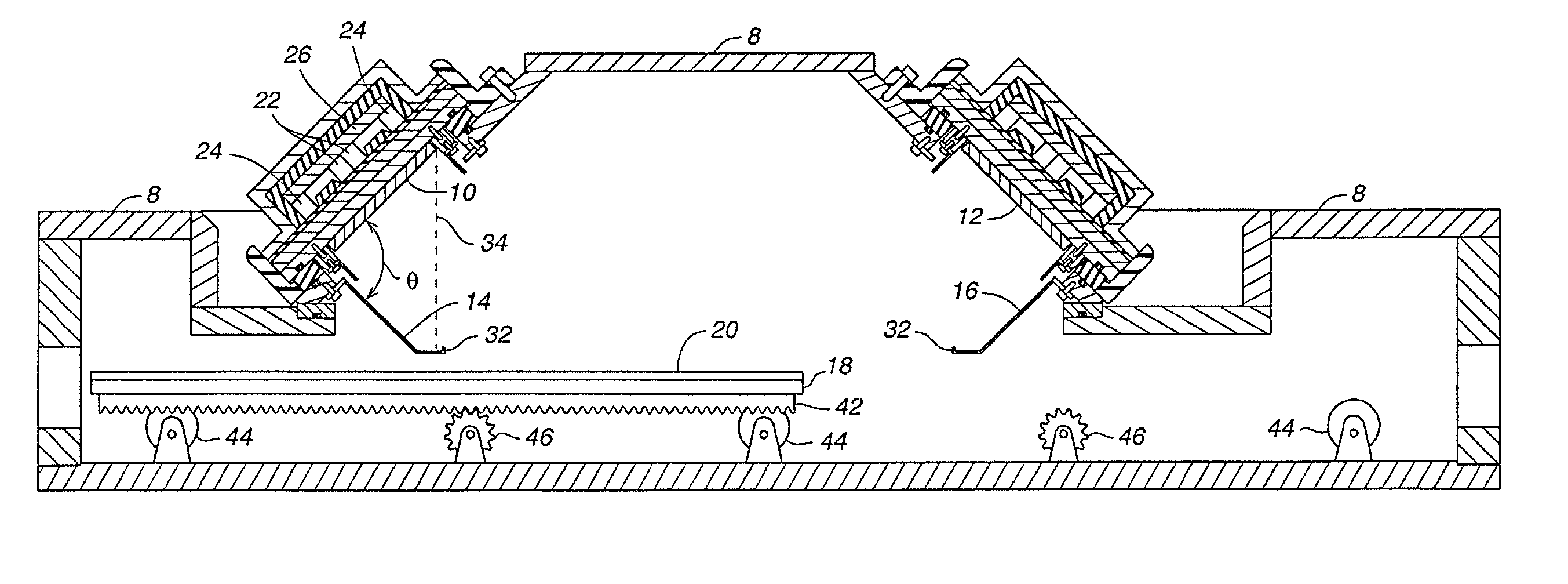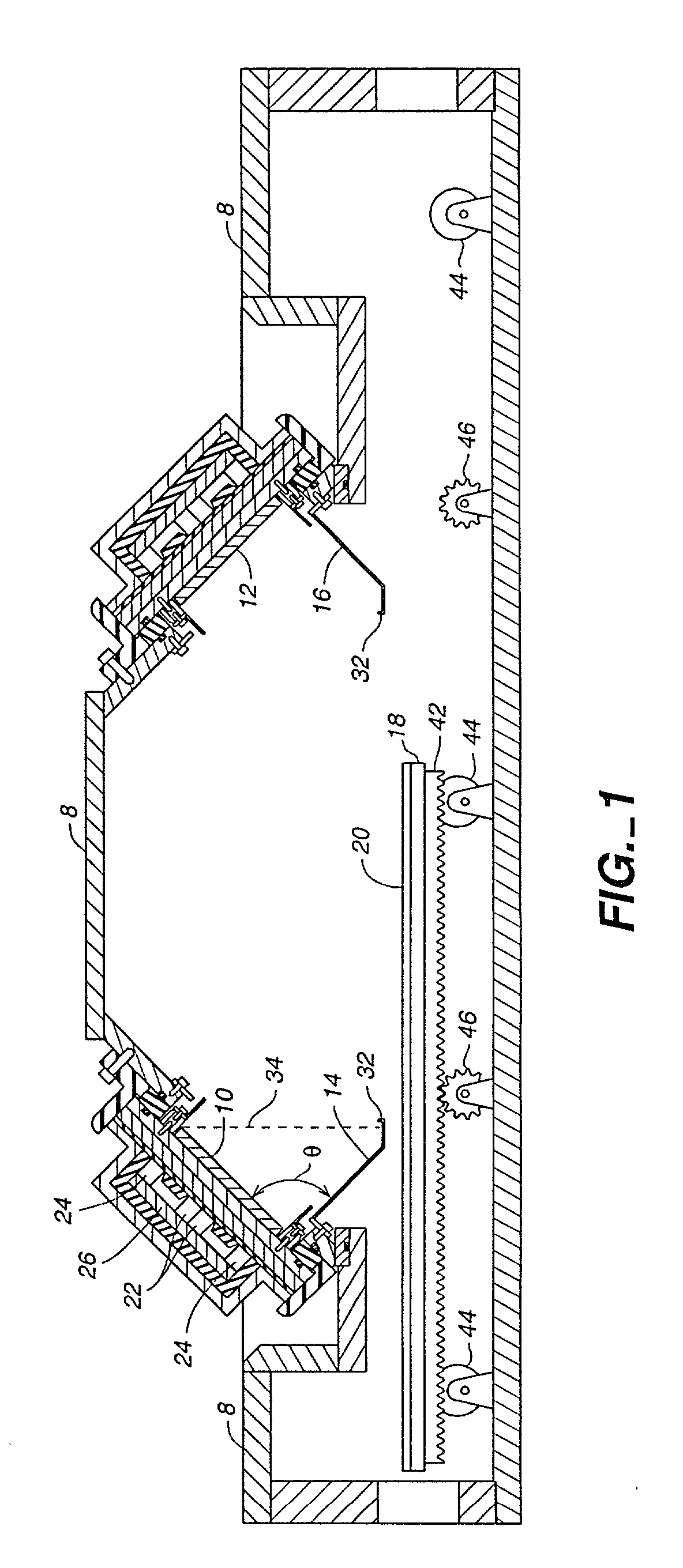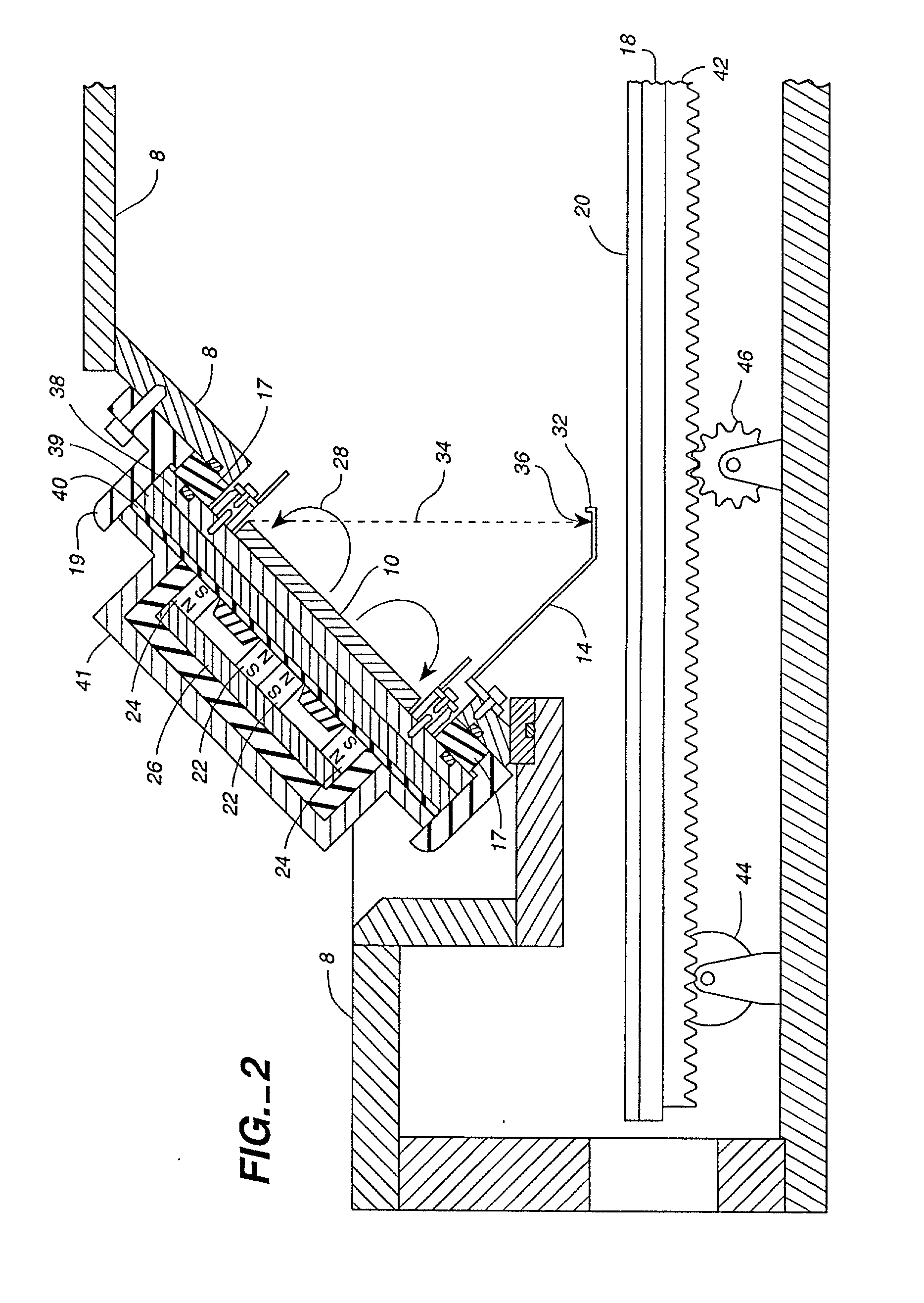High performance magnetron for DC sputtering systems
a technology of dc sputtering system and magnetron, which is applied in the direction of vacuum evaporation coating, coating, plasma technique, etc., can solve the problems of contaminant particles falling on the workpiece, the electronic device being manufactured, and the most severe corrosion of the workpiece, etc., to achieve mechanical support of a large glass substrate in a vertical orientation without excessive stress and even cracking the substra
- Summary
- Abstract
- Description
- Claims
- Application Information
AI Technical Summary
Problems solved by technology
Method used
Image
Examples
example
[0068] The configurations depicted in FIGS. 9 and 12 were constructed for a 4300 PVD system and the magnetic flux density measured across target 10 using a 3-axis Hall-effect probe. Magnetic flux proved more widely distributed for the 45.degree. oriented perimeter magnets 124 of the system of FIG. 12 than for the 90.degree. degree oriented perimeter magnets 24 of the system of FIG. 9. Specifically, flux density increased from 100 to 600 gauss in free electron region 129 between inner and outer magnets 22, 124 and attenuated by 50 to 200 gauss in other regions of target 10 where development of grooves 25, 27 was greatest for the 90.degree. system. Further, DC output voltage for the 45.degree. system was 35% lower than for the 90.degree. system for a constant power output level.
PUM
| Property | Measurement | Unit |
|---|---|---|
| magnetization angle | aaaaa | aaaaa |
| angle | aaaaa | aaaaa |
| magnetization angles | aaaaa | aaaaa |
Abstract
Description
Claims
Application Information
 Login to View More
Login to View More - R&D
- Intellectual Property
- Life Sciences
- Materials
- Tech Scout
- Unparalleled Data Quality
- Higher Quality Content
- 60% Fewer Hallucinations
Browse by: Latest US Patents, China's latest patents, Technical Efficacy Thesaurus, Application Domain, Technology Topic, Popular Technical Reports.
© 2025 PatSnap. All rights reserved.Legal|Privacy policy|Modern Slavery Act Transparency Statement|Sitemap|About US| Contact US: help@patsnap.com



